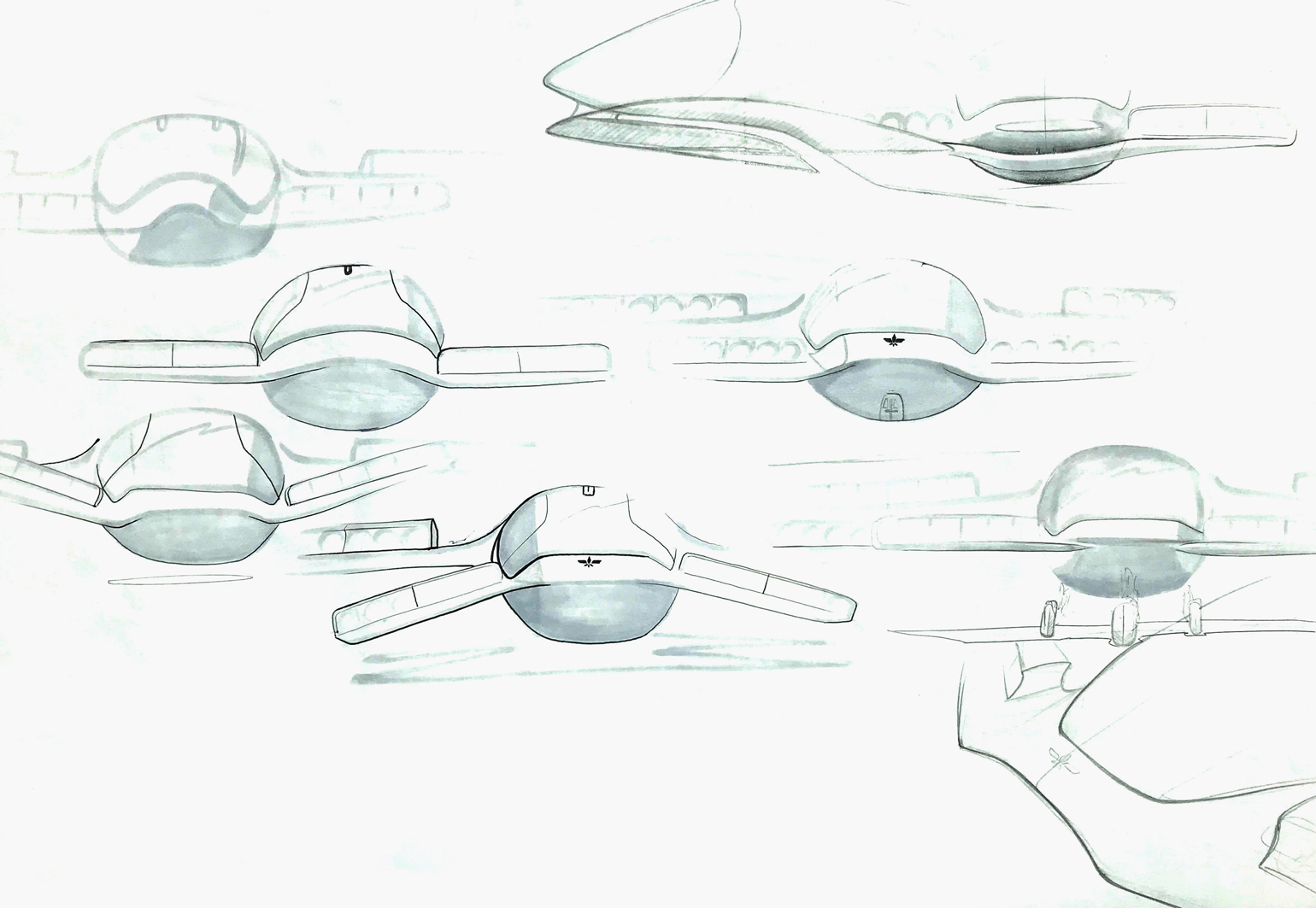The Lilium Jet is inspired by gliding manta ray, new sketches reveal
This vertical take-off and landing electrically powered aeroplane – designed by Munich-based Lilium GmbH – is set to revolutionise on-demand air taxi service. As the design scoops a coveted Red Dot of approval, cast your eyes over these newly released sketches, that reveal its idiosyncratic design inspirations...

‘Our vision is to bring the world a form of travel that has never existed before,’ says Patrick Nathen, co-founder and vice president of product at Lilium. ‘Before we even put pen to paper, we knew that we wanted the final design of the Lilium Jet to take an organic form.’
Instead of looking to the skies, Nathen turned to the ocean, and the form of the manta ray, inspired by the effortless way they glide. Biomimicry played an important role. Mantas move through the water by the wing-like movements of their pectoral fins, which drive water backwards. ‘We sought to bring the same simplicity and elegance to our own aircraft,’ Nathen continues, and as these new sketches reveal, a philosophy of clean and minimal design runs through Lilium's processes. With no tail, no rudder and only one moving part in each engine, the Lilium Jet embodies this near-natural ideal, while balancing functional engineering requirements.
RELATED STORY

Two months since its maiden voyage over Germany, focus is now on landing the Lilium Jet – and delighting customers in the process – in various regions around the world until 2025. Keep one eye up.




INFORMATION
Receive our daily digest of inspiration, escapism and design stories from around the world direct to your inbox.
Elly Parsons is the Digital Editor of Wallpaper*, where she oversees Wallpaper.com and its social platforms. She has been with the brand since 2015 in various roles, spending time as digital writer – specialising in art, technology and contemporary culture – and as deputy digital editor. She was shortlisted for a PPA Award in 2017, has written extensively for many publications, and has contributed to three books. She is a guest lecturer in digital journalism at Goldsmiths University, London, where she also holds a masters degree in creative writing. Now, her main areas of expertise include content strategy, audience engagement, and social media.
-
 Year in Review: we’re always after innovations that interest us – here are ten of 2025’s best
Year in Review: we’re always after innovations that interest us – here are ten of 2025’s bestWe present ten pieces of tech that broke the mould in some way, from fresh takes on guitar design, new uses for old equipment and the world’s most retro smartwatch
-
 Art and culture editor Hannah Silver's top ten interviews of 2025
Art and culture editor Hannah Silver's top ten interviews of 2025Glitching, coding and painting: 2025 has been a bumper year for art and culture. Here, Art and culture editor Hannah Silver selects her favourite moments
-
 In Norway, remoteness becomes the new luxury
In Norway, remoteness becomes the new luxuryAcross islands and fjords, a new wave of design-led hideaways is elevating remoteness into a refined, elemental form of luxury